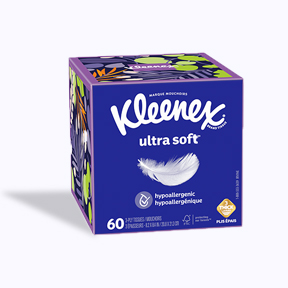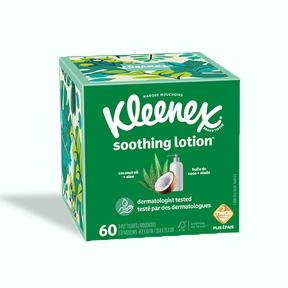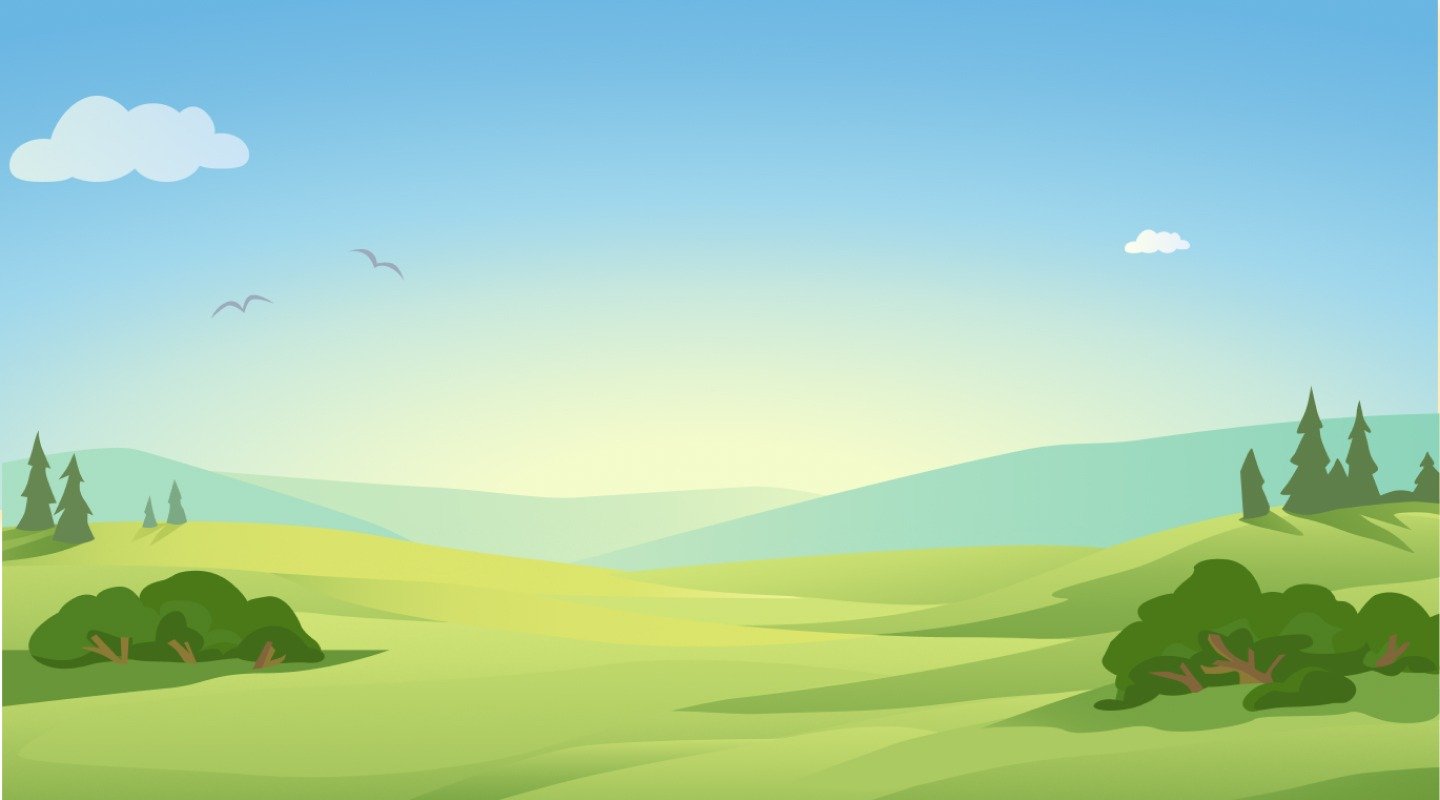


Click here to sign up for alerts
Tap here to sign up for alerts

The pollen forecast for your area
The weather forecast for your area
Discover our hay fever advice and more information about pollen in your area.

Get ahead of pollen with personalized alerts!
Sign up for pollen alertsPollen Count in Calgary, Alberta
What is the pollen count in Calgary today?
Check the pollen count in Calgary today to see what allergens are out there causing your hay fever to go haywire. Enter your postal code above to see the daily pollen count in Calgary.
Pollen forecast for Calgary
Whether it’s the Calgary Stampede or the Calgary Zoo you’re looking to visit, our pollen tracker will outline how high the pollen count in Calgary is going to be over the coming days.
Pollen Month-by-Month in Calgary
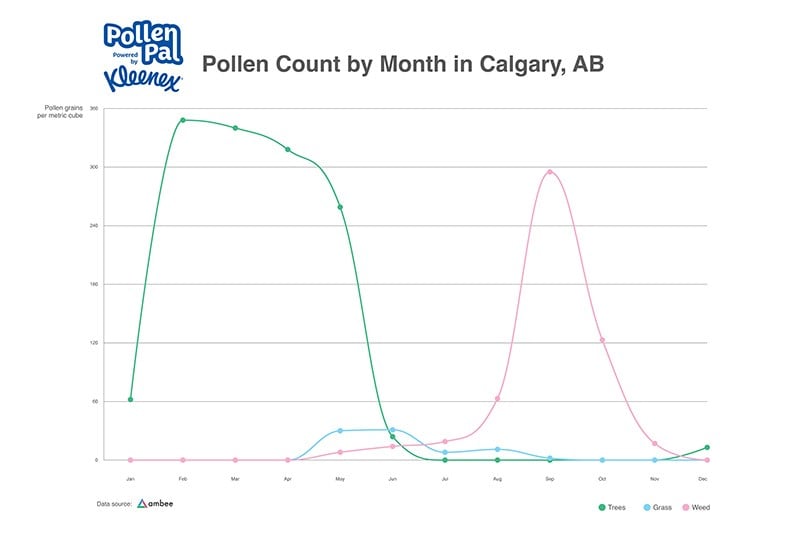
-
January
-
February
-
March
-
April
-
May
-
June
-
July
-
August
-
September
-
October
-
November
-
December
With snow covering most of Calgary, this month has a low pollen count. Due to the low pollen count, allergies in January are likely mold or animal related. Having trouble distinguishing between a winter cold and hay fever? Check out our guide to learn the differences.
So long as the freezing temperatures continue in Calgary, pollen rarely makes its presence felt this early in the year.
The first month of spring brings with it the beginning of tree pollen season. Trees in season include Cedars, Hazels, Alders, Elms, Maples, Willows, Poplars, Pines and Oaks.
April showers bring grass pollen season! Introducing Kentucky grass, the first representative of the upcoming season. Tree pollen remains the dominant pollen producer in Calgary during April.
Sycamore trees begin pollenating in May, along with Kentucky, Bermuda, Johnson, orchard, and Timothy grasses which evenly spread their pollen across Calgary.
By June, sweet vernal joins the party and adds its pollen to the other grasses. Pine, birch and oaks are the primary producers of tree pollen within Calgary.
In July, grass pollen is peaking in Calgary, while the majority of tree pollen production is coming to an end for another year.
The good news is that tree pollen production has peaked with the exception of a few late bloomers. For Calgary, ragweed is now the dominant pollen producer, along with dock, nettle, mugwort and plantain.
Hay fever season is finally winding down with ragweed on the decline. It’s time to take a deep breath without causing runny noses or itchy eyes – and hopefully, the sun will stay around to make the most of it!
With any luck, the last of the weed pollen is on its way out, although some may hang around until the first frost of winter in Calgary.
Enjoy the changing leaf colours without your eyes watering: November’s pollen count tends to be low.
December brings the first official day of winter in Calgary, which traditionally welcomes low levels of pollen for the next few months.
Top Causes of Pollen in Calgary
Trees produce pollen in Calgary from March until July. Calgary’s most common tree allergens are Elm, Birch, Pine, Poplar, and Ash trees1. Grass pollen is in the air from April until July as well, followed by weed pollen. Ragweed pollen is the dominant strain in Calgary, beginning in August through September (or until cooler temperatures take over.)
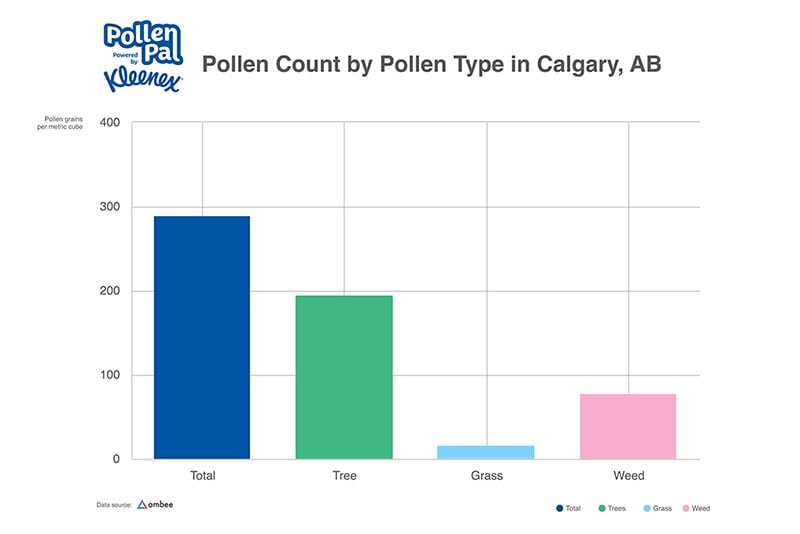
How to Stay Prepared for Calgary’s Allergy Seasons
- When seasonal allergies strike, have a package of Kleenex® Ultra On-the-Go 3-Ply Pocket Facial Tissues ready to comfort your stuffy nose.
- Have sunglasses handy to stop pollen from reaching your eyes.
- Remove pollen by washing your hands often when out and about.
- Trap pollen by putting petroleum jelly around your nostrils and upper lip.2
- Filter out pollen and allergens by wearing a highly protective comfortable mask.3
- When you return home, change your clothes and shower after spending time outside to remove pollen.
- Try nasal breathing exercises for a natural solution, as they have been shown to help those using standard nasal sprays.4
Pollen Hotspots in Calgary
Hay fever season for Calgary begins in March, when trees begin producing pollen, followed by grasses in April and weeds in August. Popular places like Prince’s Island Park and Bow River will be pollen central during these months. Even the Heritage Park Historical Village can induce seasonal allergies, unless you take care to prioritize the indoor exhibitions.
Allergy Friendly Activities in Calgary
Calgary’s generosity extends to pollen levels in spring and summer, when the pollen count hits its high. Tree, grass and weed pollen all reach peaks at different times – so it’s worth planning any trips to the city’s parks and woodlands when they are lower. Check out Your Pollen Pal before you plan your day out on the town.
Cultural Sites
Explore the city by visiting one of these well-known landmarks.
- Calgary Tower
- Studio Bell
- Telus Spark Science Centre
- Stephen Avenue Walk
- Fort Calgary
- Heritage Park Historical Village
Indoor Activities
Calgary is one city where Canada’s infamous winters can help anyone trying to avoid pollen in the warmer weather! Using the Skywalk to get around, you will have access to 18 km of elevated walkways and bridges, enabling you to shop and visit museums to your heart’s content. Keep in mind that depending on your allergies, you may want to avoid the Devonian Gardens, the indoor botanical garden containing over 550 trees and 20,000 plants.
- +15 Skywalk
- Glenbow Museum
- Core Shopping Centre
- Royal Tyrrell Museum
- Speeders Indoor ProKarts
Sources:
Pollen Levels
The following table shows the risk level for each type of pollen derived by applying NAB guidelines to our data and taking percentile values from the extended season for each type of pollen.
Severity of pollen is dictated by the PPM number, which stands for Pollen Grains Per Cubic Metre. The weather and time of day can also be a big factor when it comes to how the pollen count can affect you. As pollen falls to the ground when the heat dissipates during the evening, this can mean your seasonal allergy symptoms get worse and is why many allergy sufferers have worse symptoms in the night. On rainy days, you’ll find your allergy symptoms are easier to manage as rain tends to wash pollen away.
- Low
- Moderate
- High
- Critical
Tree Pollen
- 0-95
- 96-207
- 208-703
- 704+
Weed Pollen
- 0-20
- 21-77
- 78-266
- 267+
Grass Pollen
- 0-29
- 30-60
- 61-341
- 342+
Types of Pollen
We’ve taken a closer look at the types of pollen out there to help you narrow down which ones will have you reaching for the tissues.
Show Allergy Season Who’s Boss
Looking for more info on seasonal allergies and symptoms? Check out our latest articles to help you put pollen allergies in their place.
Find Comfort From Allergies with Kleenex®
Seasonal or not, allergy symptoms can take a heavy toll on you. Let Kleenex® facial tissues help relieve some of those symptoms.
View all products
Frequently Asked Questions
- Local Pollen traps, where available.
- Weather data and other anthropogenic factors.
- Vegetation related data around your region.
A tree pollen level above 50 is considered high, while one to 10 is considered low. Be sure to check your local pollen count before venturing outside and plan accordingly.
 Get Pollen Alerts
Get Pollen Alerts

















